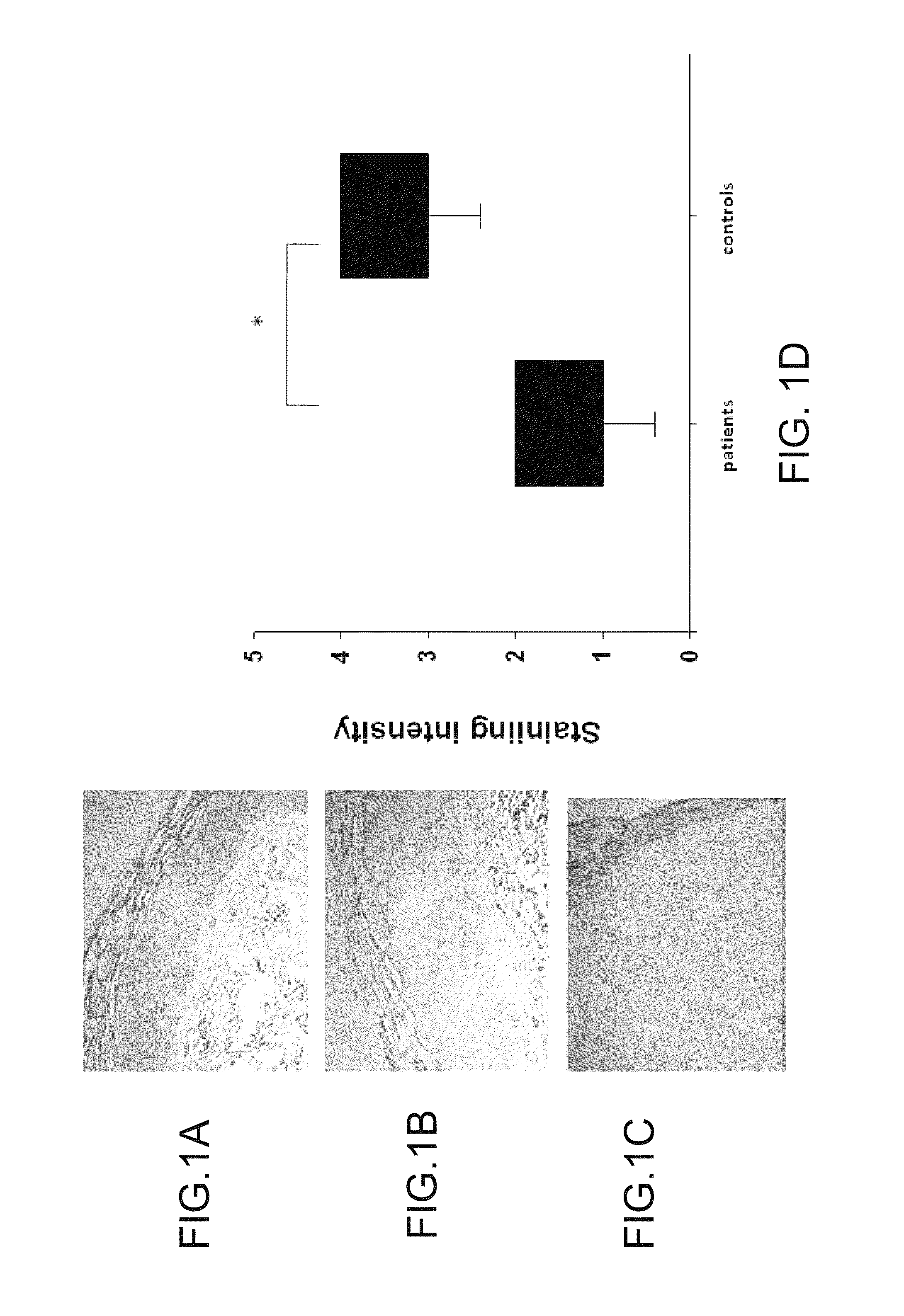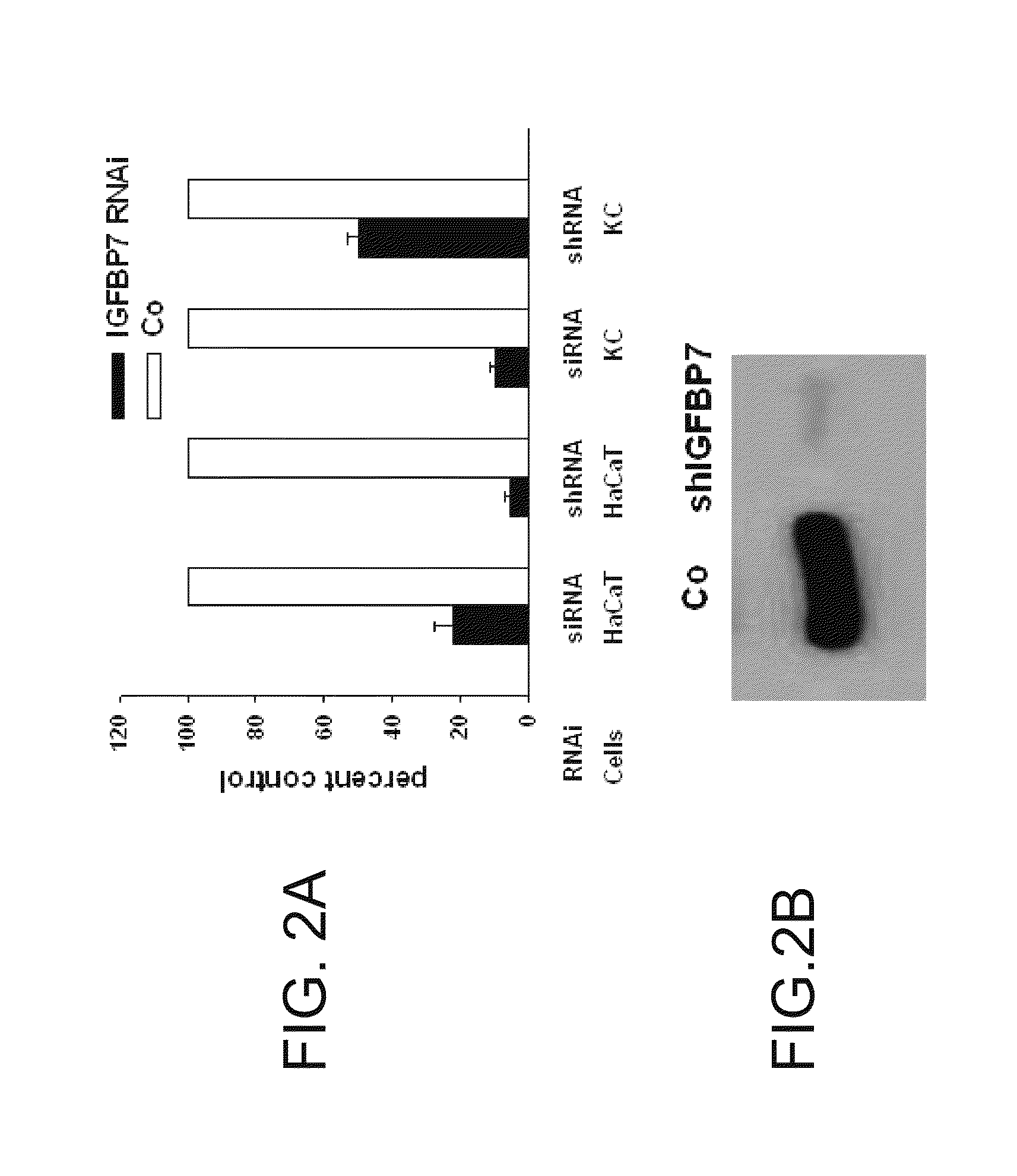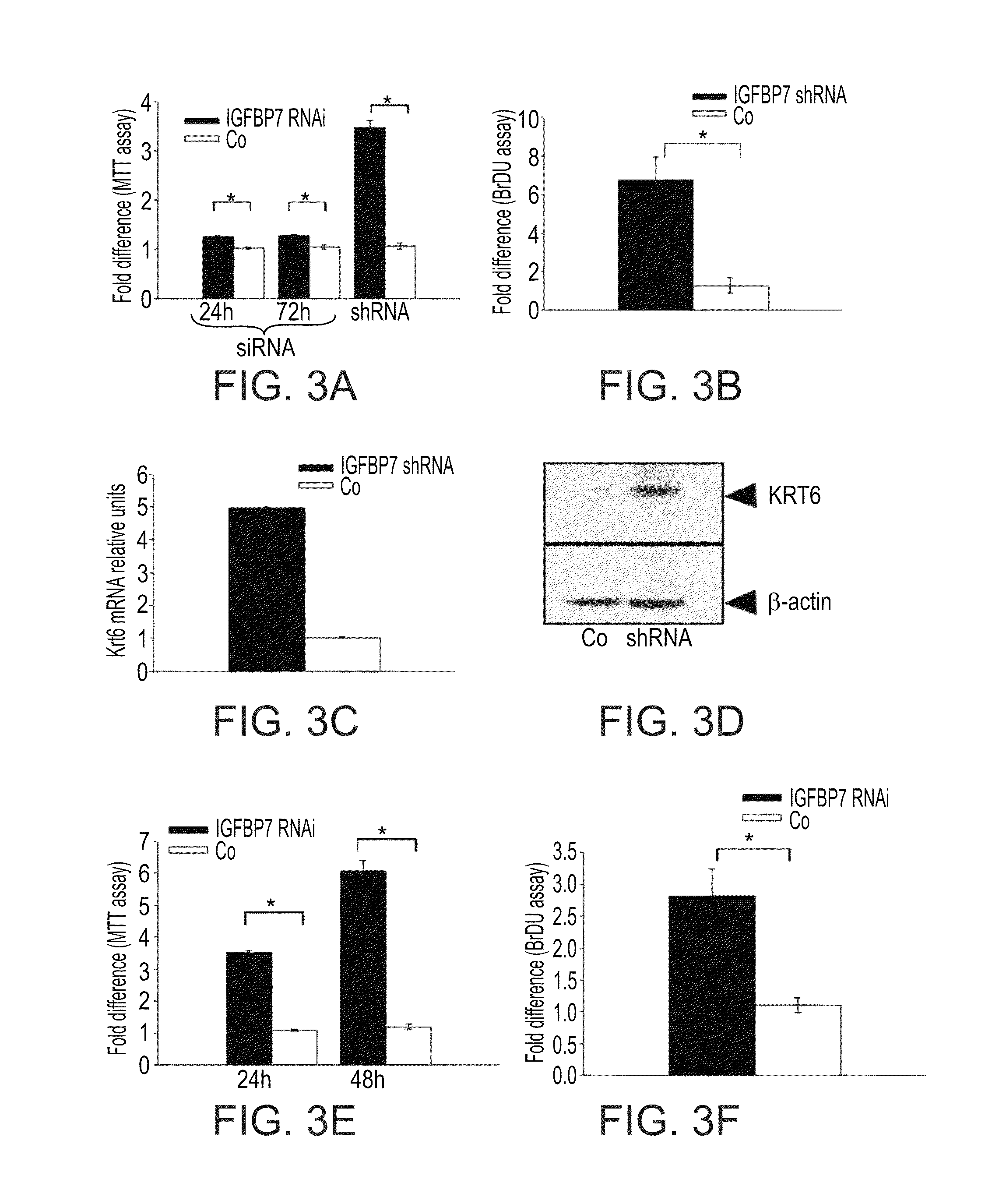Method of regulating proliferation and differentiation of keratinocyes
a technology of keratinocyes and proliferation, applied in the field of regulating the proliferation and differentiation of keratinocyes, can solve the problems of hyperproliferative skin disease in mi
- Summary
- Abstract
- Description
- Claims
- Application Information
AI Technical Summary
Benefits of technology
Problems solved by technology
Method used
Image
Examples
example 1
IGFBP7 Expression is Decreased in Psoriatic Skin Compared with Normal Skin
[0341]Experimental Results
[0342]IGFBP7 Expression is Decreased in Psoriatic Skin Compared with Normal Skin—
[0343]Previous data showed that psoriasis is associated with decreased expression of IGFBP7 (Hochberg et al., 2007). To confirm these data in an independent set of patients, the present inventors have examined by immunohistochemistry the expression of IGFBP7 protein in a series of psoriatic (n=13) and control (n=13) biopsies (FIG. 1D). IGFBP7 was found to be expressed strongly throughout the normal epidermis (FIG. 1A), whereas its expression was either absent or very weak in psoriatic epidermis (FIG. 1C). These results demonstrate that in skin of psoriasis patients there is a decreased expression of IGFBP7.
[0344]Serum Stimulation Downregulates IGFBP7 Expression—
[0345]To test the effect of serum on IGFBP7 expression levels, HaCat cells were cultured in the presence of increasing concentrations of fetal cal...
example 2
Downregulation of IGFBP7 Increases Keratinocyte Proliferation, Viability and Apoptosis
[0346]To test whether IGFBP7 is involved in the pathogenesis of psoriasis, a disorder characterized by abnormal proliferation and differentiation of epidermal keratinocytes, the present inventors induced downregulation of IGFBP7 in keratinocyte cells as follows.
[0347]Experimental Results
[0348]IGFBP7 siRNA Results in Specific Down-Regulation of IGFBP7 and not Other Genes in the IGFNP Family—
[0349]The present inventors assessed the role for IGFBP7 expression in the regulation of epidermal keratinocyte proliferation. siRNA and shRNA were used to transiently and stably decrease IGFBP7 expression in HaCat cells, respectively and shRNA was used to transiently decrease IGFBP7 expression in human primary keratinocytes. Down-regulation of IGFBP7 was confirmed by qRT-PCR (FIG. 2A) and immunoblotting of conditioned media (FIG. 2B). To exclude off-target effects of the siRNA and shRNA used, the present invento...
example 3
IGFBP7 is Involved in Calcium Induced Differentiation of Keratinocytes
[0356]Experimental Results
[0357]IGFBP7 is Required for Calcium-Induced Expression of Genes Associated with Keratinocyte Differentiation—
[0358]To investigate the role of IGFBP7 in epidermal homeostasis, the present inventors induced differentiation of HaCat cells expressing either IGFBP7-specific or control shRNA in the presence of 1.4 mM Ca2+ medium as previously described (Boukamp P, Petrussevska R T, et al., 1988. Normal keratinization in a spontaneously immortalized aneuploid human keratinocyte cell line. J Cell Biol 106:761-771). Down-regulation of IGFBP7 was found to block the induction of three markers of keratinocyte differentiation, KRT10, involucrin (FIG. 5A) and loricrin (FIG. 11). In addition, cells down-regulated for IGFBP7 failed to demonstrate morphological changes characteristic of calcium-induced differentiation (FIGS. 9A-D). Similar results were obtained with primary keratinocytes (FIG. 5B), sugge...
PUM
| Property | Measurement | Unit |
|---|---|---|
| flash point | aaaaa | aaaaa |
| melting point | aaaaa | aaaaa |
| mean droplet size | aaaaa | aaaaa |
Abstract
Description
Claims
Application Information
 Login to View More
Login to View More - R&D
- Intellectual Property
- Life Sciences
- Materials
- Tech Scout
- Unparalleled Data Quality
- Higher Quality Content
- 60% Fewer Hallucinations
Browse by: Latest US Patents, China's latest patents, Technical Efficacy Thesaurus, Application Domain, Technology Topic, Popular Technical Reports.
© 2025 PatSnap. All rights reserved.Legal|Privacy policy|Modern Slavery Act Transparency Statement|Sitemap|About US| Contact US: help@patsnap.com



